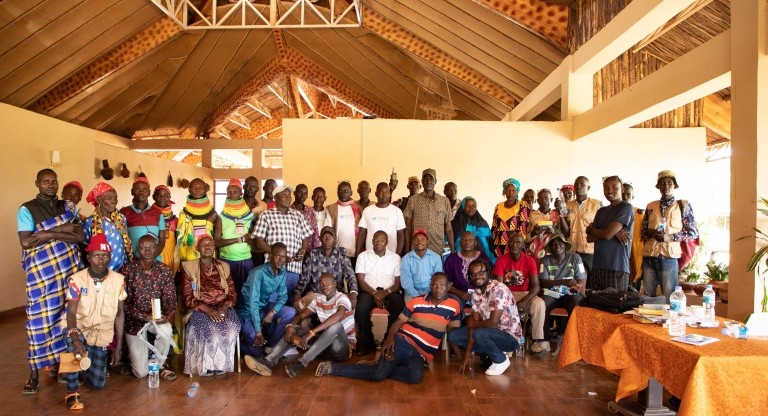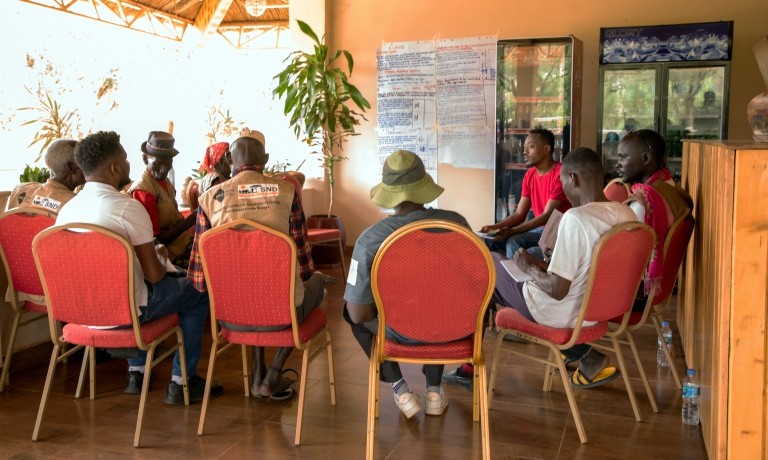Blog
In the Horn of Africa, transformational use of data and evidence help to stem conflict, build peace

In global development, it’s sometimes simple to identify our goals and measure our impact. Our goal might be to boost childhood immunizations in a given community, for example, as measured by the percentage of children who have been vaccinated.
Often, though, needs and results are far more complex. This is the case in the Horn of Africa, where Pact has worked since 2017 to stem conflict and build peace in shared border areas of Ethiopia, Somalia and Kenya, through the RASMI and SEEK projects, funded by the European Union Trust Fund for Africa.
“The drivers of conflict and instability among these communities are extremely complex and often changing,” explains Gedion Juma, Pact’s monitoring and evaluation manager in Kenya. “Understanding the impact of our interventions, and even defining what progress might look like, is therefore also complex.”
Across Pact’s global programming, we embrace a data-driven, evidence-based approach, always adapted to the local context. At the same time, Pact is also committed to engaged communities, in which local communities lead their own development. Our approach therefore prioritizes evidence and community leadership over that evidence, which contributes to more effective, accountable and sustainable programming.
For these reasons, in the case of RASMI and SEEK, we turned to a key tool: outcome mapping (OM), a participatory monitoring and evaluation methodology in which project teams actively engage community members from the outset in the design and implementation of a learning-oriented strategic plan that enables communities to identify and act on their own criteria of success. OM enables development practitioners to not only examine outcomes of interest using adaptable tracking approaches, but to understand the processes and incremental changes that need to happen to lead to those outcomes, which is particularly useful in highly dynamic conflict settings.
“Outcome mapping enabled deep community participation as well as flexibility in our use of data and evidence – both critical given the complex context and challenges involved in RASMI and SEEK,” says Alysson Akiko Oakley, Pact’s vice president for learning, evidence and impact.
“At Pact, we understand that being data-driven and evidence-based isn’t always linear, and what is considered ‘best practice’ is not always relevant to the context at hand. So traditional monitoring systems with fixed metrics aren’t always the answer. We have to be flexible in the kind of evidence we find useful at any given time. We have to be responsive to the various evidentiary needs of the communities we serve.”

Under RASMI and SEEK, Pact and our partners began by conducting Applied Political Economy Analyses (APEAs) to understand the underlying interests and incentives contributing to the decisions and behaviors of key actors in the communities where the projects worked. Findings enabled us to tailor interventions based on stakeholder interests and incentives as they related to unique drivers revealed in conflict system mapping exercises. Project teams also used insights surfaced by APEAs to identify potential change agents.
These change agents, called Boundary Partners in RASMI and SEEK, played a critical role in identifying and designing the projects’ goals and measures of impact. Boundary partners included youth leaders, women leaders, religious leaders, peace committee members and local government and traditional authorities. Pact and our partners began engaging them soon after the projects’ inception. Outcome mapping enabled the projects to monitor and document the specific behavior changes that Boundary Partners identified as being critical for preventing local conflict and mitigating its impact.
To support Boundary Partners in preventing and mitigating conflict and countering violent extremism, project teams first analyzed their baseline strengths and capacity support needs. Next, the projects worked with each Boundary Partner group to develop an outcome vision statement that articulated what they believed were ideal behavioral changes, as well as “graduated progress markers” that would indicate to them and to the project whether and what incremental change they should expect, hope and love to see over time. The progress markers were then packaged into “Outcome Journals.” In contrast to logical frameworks that require projects to report on predetermined and fixed changes with specific data, Outcome Journals support reflection on unanticipated changes and flexibility in identifying what evidence was most appropriate. Boundary Partners updated their Outcome Journals approximately every six months, reflecting on what, if any, actor-level change had occurred, and if this had led to any changes in social cohesion, peacebuilding capacity or conflict sensitivity.
OM facilitated continued engagement and open, transparent relationship building between Boundary Partners and project staff. In addition to increasingly interfacing with project staff, Boundary Partners benefitted from regular cross-border communication and planning with one another. Outcome Journals revealed, for example, that youth leaders in multiple conflict systems had better relationships with neighboring communities and became better networked to work together. Using a traditional monitoring framework, this finding would not have been identified.
Examples of other results revealed in Outcome Journals included women becoming active peace builders with defined roles; routine coordination among cross-border communities, police and local administrations in tracking and returning stolen livestock that used to result in violent revenge; Boundary Partners’ use of informal channels of communication such as WhatsApp groups, text messages and phone calls to coordinate peace building activities; and dialogues and peace meetings complemented by joint livelihoods projects such as clearing connector roads and supplying local fishers with nets and boats.
“A key question in evaluation is about how transformative we want to be,” Oakley says. “In the case of RASMI and SEEK and outcome mapping, our results show that we were truly transformative.”